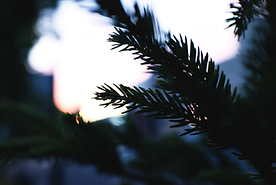top of page
C


Japanese Elm
(Harunire)
開拓のイメージ
Image of Pioneering
“Image of Pioneering” towers high above the centre of the intersection of Kaimono Shopping Park and Ryokudo as if aiming for a place beyond the sky. This tower was created by a sculptor from Aibetsu named Nakai Nobuya in the year Showa 42 (1967). On the main tower, which is made of iron, we can see the symbolic arrangement of pioneers and their tools woven from this element of nature. This dark brown tower, which incorporates the remnants of the pioneering era, conveys the thoughts of the pioneers who once worked themselves to the bone to develop this land.
Fujinzo (Clothed Statue)
.png)
The Fujinzo clothed statue has a dignified appearance which gives off a feeling of silent determination. This work was made as a commemoration of the Olympics by the hands of the same sculptor who made the nude Fujinzo – Kato Kensei. There is also a sculpture with arms made in the same style on Enoshima. The armless Fujinzo of the two sister statues is said to “have been created with the Classical European Sculptures in mind”. When it comes to classical armless statues, the Venus de Milo created in the Ancient Greek Period is the most famous. This Fujinzo clothed statue is a work that contains images of pioneering, together with a hidden invitation to ancient times.
婦人像
エリモシャクナゲ
Erimo Rhododendron (Erimo-shakunage)

The Erimo Rhododendron is a type of Hakusan Rhododendron that can be found mainly around Cape Erimo. It has small, plump, oblong leaves. The Erimo Rhododendron requires ten full years for its flowers to bloom with multilayered white petals. Its appearance prior to blooming is favoured for use in Bonsai and rock garden arrangements and livens up any area before or after its flowers bloom.
ハルニレ
Japanese Elm (Harunire)

The Japanese Elm is a tree that grows slowly, similar to humans. As it matures slowly, it grows into a safe and sturdy tree. It grows tall while communicating thoughts and feelings with people who live close by, lives together with our memories, and protects us from wind, rain and the sun’s harsh rays. The towering Japanese Elm projects a deep kindness and announces the arrival of spring with the blooming of its many faint red flowers.
Yuzhno-Sakhalinsk Monument of Friendship

The Russian state of Sakhalin can be reached in an hour from airports in Hokkaido. The state capital is the city of Yuzhno-Sakhalinsk. There are many fascinating tourist spots, including Gagarin Park, named after Yuri Gagarin, the first human in history to journey to outer space. After a visit from the delegation of Asahikawa City to Yuzhno-Sakhalinsk, the two became sister cites in November 1967. This past year marked 50 years of friendship between the two cities.
ユジノサハリンスク
藤棚
Hanging Wisteria Pergola (Fujidana)

In autumn, the Wisteria is soft and fluffy, but in April and May, the tufts clad in light purple petals bloom profusely as if they were a meteor shower falling through the night sky. In Japan, there are Wisteria trees which are over 1000 years old, living for what seems like an eternity. A vitality that easily surpasses our own lifespans is concealed within the elegant Wisteria and its fantastic spectacle leads our thoughts to our own fragile lives which are as fleeting as the twinkle of a shooting star.
.png)
アカエゾマツ
Red Spruce (Akaezomatsu)
The Red Spruce is adored as a natural Christmas tree. During the season when the landscape is coated in white, it magnificently watches over the faces of smiling children. Among Ainu people, it is called the “Goddess Tree” or the “Goddess of the Forest”, extolling the beauty of its form. The essential oil collected from this beautiful tree is an invitation to the verdant and luxuriant forest. Its enchanting, natural aroma heals both the body and the mind.
Japanese Lime (Shina)

The amiable Japanese Lime, with its lime-green leaves, loves the cool weather. Its flowering season is from June to July. The flowers of the Japanese Lime contain high quality nectar which attracts bees, and gives off a refreshing smell that fills the air. In the Ainu language, “Shina” means “to tie together” because the fibres of the Japanese Lime were used to weave clothes and textiles, which allowed the Ainu people to live warmly and comfortably.
シナノキ
Korean Spindletree (Tsuribana)
ツリバナ
In early summer, green, unripe fruit hangs from the slender branches of the Spindletree, which is where it gets its name: “Hanging Flower.” In autumn, when the vivid leaves are at their most brilliant, the vermillion seeds peel back their skin to reveal a pentad of bright red fruit, elegantly decorating the landscape. In the season where the land is covered in pure white snow, this fruit falls and garnishes the fresh snow with tinges of red, reminding us of the last vestiges of the past autumn.

Painted Maple (Itayakaede)

The Painted Maple is related to the sugar maple which produces the sap required for maple syrup and therefore has sweet, heartwarming sap flowing within. Ainu people used to drink the sap, boil it down to make candy. During winter this candy is included to add to the overall color of the season’s cuisine. Also, since the leaves grow thickly, it blocks the sunlight on sunny days and raindrops on rainy days, making a nice place to have a short rest. In April and May, the branches softly bloom with small, pale-yellow flowers.
イタヤカエデ
執筆:佐々木祐輔 (Sasaki Yusuke)
<参考文献 (Bibliography)
□植物
福岡 イト子、 佐藤 寿子『アイヌ植物誌』草風館 (1995)
「アイヌと自然デジタル図鑑」<http://www.ainu-museum.or.jp/siror/index.html>
「アイヌ生活文化再現マニュアル 熊の霊送り【道具編】イオマンテ」財団法人アイヌ文化振興・研究推進機構(2003)<https://www.frpac.or.jp/manual/files/2003_08.pdf>
□彫刻
『あさひかわの彫刻』旭川市教育委員会 (1987)
『あさひかわの彫刻』旭川市教育委員会 (1992)
中原悌二郎記念旭川市彫刻美術館/編者『旭川叢書 第25巻 あさひかわと彫刻』旭川振興公社 (1999)
『北海道立近代美術館紀要 第7号』北海道立近代美術館 (1985)
「国土交通省大臣表彰 手づくり郷土賞」
<http://www.mlit.go.jp/sogoseisaku/region/tedukuri/list/pref/list_01hokkai.html>
bottom of page

